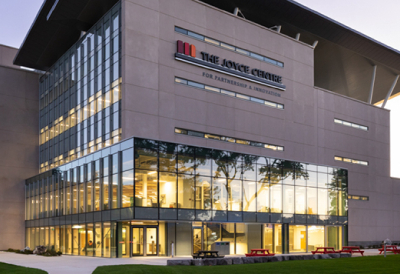Power Shifts: Emerging Low-Voltage Trends, Impacts and Opportunities, Part 3

June 30, 2017
In the previous issue of Electrical Industry Newsweek, we continued our coverage of Electro-Federation Canada’s recently released research report, Power Shifts: Emerging Low-Voltage Trends, Impacts and Opportunities for the Canadian Electrical Channel. The article provided an end-to-end overview of low voltage, including DC power, low-voltage DC, Power over Ethernet, PoE partnerships, DC microgrids, and distributed low-voltage power. In this issue, the third in a 5-part series: implications for codes, standards and regulations.
As renewables and battery storage (both DC) take their place and join the grid as economical sources of power supply, it is extremely important that standards be established for the supply of DC power for markets in Canada, across North America, and globally. One of the identified gaps in the Canadian Electrical Code that have come about with the emergence of LVDC power developments is between data systems and communication systems, and powered devices.
Recently, there has been increased interest in cables that can supply power to devices and handle sensing and control communications, such as Ethernet cable (subsequently termed, Power over Ethernet (PoE)). This interest in PoE has brought into play a gap in the Canadian Electrical Code (CEC) between data systems and communication systems, and powered devices.
The CEC Part 1, Section 60: “Electrical Communication Systems” outlines the requirements for communication systems. However, adoption of this section varies from province to province. For instance, in Ontario, the term “Communications” is defined in the Ontario Electrical Safety Code, but Section 60 (“Communication Systems”) is not included, which means Ontario’s Electrical Safety Authority (ESA) is not currently required to inspect communication systems.
Now, it is important to note that communication systems had traditionally been telephone wires only, and now include data. With data now morphing to become data and power together in the same cable assemblies, the Electrical Code will require some redefinition, especially considering these growing uncertainties:
• Does the code now apply?
• Are permits required?
• Are inspections required?
• Who’s allowed to do the work?
• Does it have to be a licensed electrician?
• Does it have to be a licensed electrical contractor?
The addition of power and data over an Ethernet cable has also raised some safety concerns. Traditionally, data cable bundling has not had to carry power continuously; it has run power intermittently at low voltages over data lines, whereas lighting in an office building would run all day at higher loads. The impact of powering devices, versus just carrying data on cabling systems, was never considered in its design, and data designs and installations have not evolved to address this. So, we must now consider what the effects of bundling and running power continuously might be.
The defined term “Ethernet” under the IEEE Standard (see Glossary of Terms in Appendix A) does fall within the limits of a Class 2 Circuit in Section 16 of the Canadian Electrical Code. So to some degree, the code does address PoE, however, it does not deal with certain aspects like running conductors in parallel in the same cable assembly. The rating on conductors for these demands had never been considered, but now must be, with advancements in PoE. The main gaps in the Canadian Electrical Code are the heating effects of bundled cables that are subject to sustained loading, and also, the need to recognize the designations of Ethernet cable as an acceptable wiring means for Class 2 Circuits in Table 19 of the Electrical Code: “Conditions of use and maximum allowable conductor temperature of wires and cables other than flexible cords, portable power cables, and equipment wires.”
To address the code gaps identified above, a new Subsection to Section 16 has been proposed to the Canadian Electrical Code Part 1 Committee. The new Subsection 16-300 (Class 2 Power and Data Communications) will address power and data carried in the same cable assembly and powering devices that may or may not be delivering data.
While this redefinition is key, many people are still left wondering if products need to be approved if they are connected to the output of an approved Class 2 Power Supply. This is not required to be approved in Ontario, but PoE exceeds the limits of an approved Class 2 Power Supply even though it fits within the limits of a Class 2 Circuit. Subsection Section 16 is being updated, but the changes will also include updates to Table 19: “Conditions of use and maximum allowable conductor temperature of wires and cables other than flexible cords, portable power cables, and equipment wires” for cable designations.
John Calabrese with ESA explains: “the biggest thing is just recognizing that yes; this is an electrical installation even though it looks like a data system—maybe we shouldn’t have been ignoring this all these years.” He continues, “the desktop phone has been PoE for quite a long time but nobody realized it. You just think of it as a communications device, but it’s powered. Security cameras are also powered and have data over the same cable. We have long thought of these examples as data systems so they were exempt from the Code. We need to shift our minds to recognize they are actually an electrical installation; it’s a change of paradigm.”
Coming in Part 4: low-voltage DC power trends.
Find out more about Power Shifts: Emerging Low-Voltage Trends, Impacts and Opportunities for the Canadian Electrical Channel: www.electrofed.com/market-research/.

















